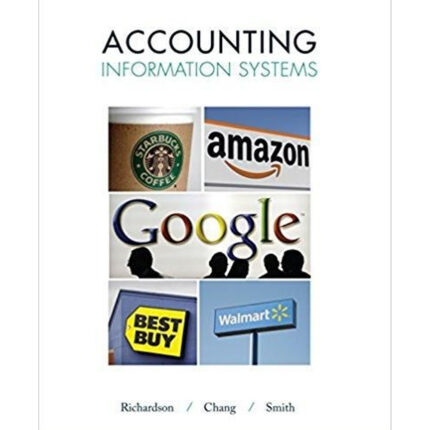Introduction to Managerial Accounting Canadian 5th Edition By Brewer – Test Bank
MULTIPLE CHOICE. Choose the one alternative that best completes the statement or answers the question. 1)
The following standards for variable manufacturing overhead have been established for a
company that makes only one product:
Standard hours per unit of output 7.8 hours
Standard variable overhead rate $12.55 per hour
The following data pertain to operations for the last month:
Actual hours 2,900 hours
Actual total variable overhead cost $31,330
Actual output 200 units
What is the variable overhead efficiency variance for the month? 1) A) $130 F. B) $4,320 F. C) $4,320 U. D) $130 U. Answer: C
Explanation: A) B) C) D) 2)
Cox Company’s direct material costs for the month of January were as follows:
Actual quantity purchased 18,000 kilograms
Actual unit purchase price $ 3.60 per kilogram
Materials price variance–unfavourable (based on
purchases)
$ 3,600
Standard quantity allowed for actual production 16,000 kilograms
Actual quantity used 15,000 kilograms
For January there was a favourable direct material quantity variance of? 2) A) $3,375. B) $3,360. C) $3,400. D) $3,800. Answer: C
Explanation: A) B) C) D) 1
3)
A labour efficiency variance resulting from the use of poor quality materials should be
charged to: 3) A) the purchasing agent. B) manufacturing overhead. C) the engineering department. D) the production manager. Answer: A
Explanation: A) B) C) D)
Reference: 11-04
Cole laboratories makes and sells a lawn fertilizer called Fastgro. The company has developed standard costs for
one bag of Fastgro as follows:
Standard Quantity Standard Cost per
Bag
Direct material 20 grams $8.00
Direct labour 0.1 hours $1.10
Variable manuf. overhead 0.1 hours $0.40
The company had no beginning inventories of any kind on Jan. 1. Variable manufacturing overhead is applied to
production on the basis of direct labour hours. During January, the following activity was recorded by the
company:
Production of Fastgro: 4,000 bags
Direct materials purchased: 85,000 grams at a cost of $32,300
Direct labour worked: 390 hours at a cost of $4,875
Variable manufacturing overhead incurred: $1,475
Inventory of direct materials on Jan. 31: 3,000 grams
4) The total variance for variable overhead for January is: 4) A) $85 F. B) $125 F. C) $100 U. D) $40 F. Answer: B
Explanation: A) B) C) D) 2
Reference: 11-03
The Albright Company uses standard costing and has established the following standards for its single product:
Direct materials 2 litres at $3 per litre
Direct labour 0.5 hours at $8 per hour
Variable manuf. overhead 0.5 hours at $2 per hour
During November, the company made 4,000 units
and incurred the following costs:
Direct materials purchased 8,100 litres at $3.10
per litre
Direct materials used 7,600 litres
Direct labour used 2,200 hours at $8.25 per hour
Actual variable manuf. overhead $4,175
The company applies variable manufacturing overhead to products on the basis of direct labour hours.
5) The labour rate variance for November was: 5) A) $550 U. B) $2,150 U. C) $2,150 F. D) $1,050 U. Answer: A
Explanation: A) B) C) D) 6)
Last month 75,000 grams of direct material were purchased and 70,000 grams were used.
If the actual purchase price per gram was $0.25 more than the standard purchase price
per gram, then the material price variance was? 6) A) $18,750 F B) $17,500 F C) $18,750 U D) $17,500 U Answer: C
Explanation: A) B) C) D) 3
Reference: 11-07
The following materials standards have been established for a particular product:
Standard quantity per unit of output: 4.4 grams
Standard price: $13.20 per gram
The following data pertain to operations concerning the product for the last month:
Actual materials purchased: 4,800 grams
Actual cost of materials purchased: $62,880
Actual materials used in production: 4,300 grams
Actual output: 700 units
7) What is the materials quantity variance for the month? 7) A) $15,982 U. B) $16,104 U. C) $6,600 U. D) $6,550 U. Answer: B
Explanation: A) B) C) D) 8)
During March, Younger Company’s direct material costs for product T were as follows:
Actual unit purchase price $6.50 per metre
Standard quantity allowed for actual production 2,100 metres
Quantity purchased and used for actual production 2,000 metres
Standard unit price $6.00 per metre
Younger’s material quantity variance for March was? 8) A) $600 favourable. B) $600 unfavourable. C) $650 unfavourable. D) $650 favourable. Answer: A
Explanation: A) B) C) D) 4
Reference: 11-02
The Litton Company has established standards as follows:
Direct material 3 kg @ $4/kg = $12 per unit
Direct labour 2 hrs. @ $8/hr. = $16 per unit
Variable manuf. overhead 2 hrs. @ $5/hr. = $10 per unit
Actual production figures for the past year are given below. The company records the materials price variance
when materials are purchased.
Units produced 600
Direct material used 2,000 kg
Direct material purchased (3,000 kg) $11,400
Direct labour cost (1,100 hrs.) $ 9,240
Variable manuf. overhead cost incurred $ 5,720
The company applies variable manufacturing overhead to products on the basis of direct labour hours.
9)
The labour rate variance is:
9) A) $440 U. B) $480 F. C) $480 U. D) $440 F. Answer: A
Explanation: A) B) C) D) 10)
A favourable material price variance coupled with an unfavourable material usage
variance would most likely result from: 10) A) changes in the product mix. B) the purchase of low quality materials. C) problems with labour efficiency. D) problems with processing machines. Answer: B
Explanation: A) B) C) D)













Reviews
There are no reviews yet.